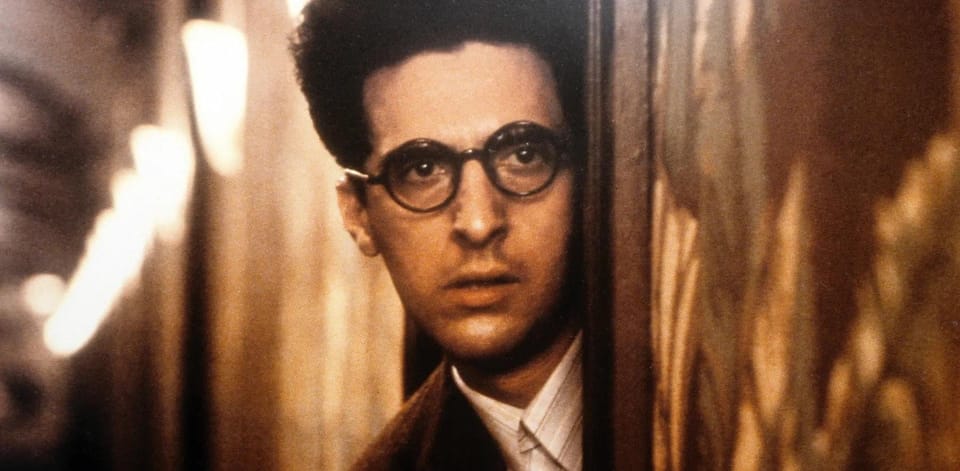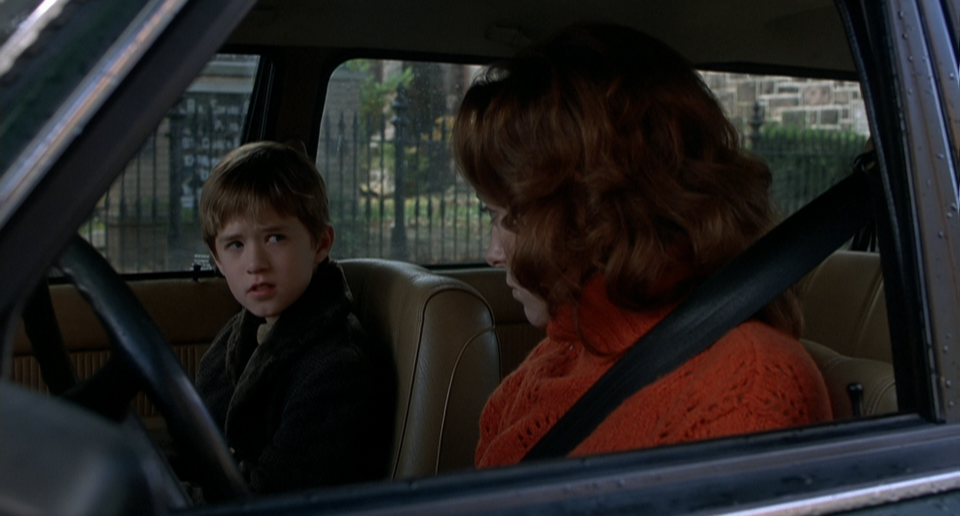The idea matters.
My first screenplays were never going to go anywhere. And not because I was a bad writer, though I was. Those screenplays were doomed because they were bad ideas for screenplays.

The Story and Plot Weekly Email is published every Tuesday morning. Don't miss another one.
The first screenplays I ever wrote were never going to go anywhere. And not because I was a bad writer, even though I was at the time.
Those screenplays were doomed because they were bad ideas for screenplays.
And if you think this only applies to my earlier work, I once sold a screenplay to Warner Bros. for six figures with an A-list actor (at the time) attached, and that wasn't going anywhere either.
While it was more cinematic than my first ones, it had no story. It had a great first half, and that was it.
Don't get me wrong, that first half was killer. Great characters, great scenes. We sold it for a reason.
But, it also never got made for a reason.
A story has to go somewhere, and something has to drive it.
It won't get to a satisfying conclusion on its own.
Could we have found a satisfying end to that screenplay? Over an infinite amount of time, most likely.
But our time isn't infinite. And we all had a choice. Keep pounding our heads against the wall, or we could all shift that energy to more promising projects.
It wasn't a hard choice for any of us. Especially WB, who was paying for the whole thing.
Why it's important.
There is no single decision you make more important than what project you are going to devote your creative energy to.
It influences how much you will struggle.
It influences your enthusiasm.
It affects your confidence.
It dictates whether you have any chance at all to meet your goals.
Not every idea wants to be a story. And not every story is ready to be written.
Still, we dive in anyway.
We have the vaguest of notions that we just know we'll make a delicious meal out of, and we launch into it.
We go all-in on a story idea that isn't even a story idea.
Perhaps it's a character. Or a situation.
Or a theme or something else that sticks with us. "What if we tell A Christmas Carol from Jacob Marley's point of view?"
"What if there was this new technology that did this?"
"What if someone had this terrible thing happen to them?"
We say to ourselves, "That's it!" And we dive in.
We don't envision the story yet, because there is no story. Instead, we envision the reaction to the story.
People will love it! It's smart! It's funny! It's kind of, sort of IP!
Perhaps we even start writing.
But the idea wasn't a story. It may be the starting point of a great story one day, but it's not there yet.
And sooner or later, we find ourselves stuck in a quagmire we can't get out of.
Our energy is spent -- not writing or creating -- but trying to get ourselves out of a mess of our own making.
There is nothing wrong with waiting.
Two of my last three screenplays were more than a decade in the making. In one of them, I wrote the first act in 2007 before realizing I really had no idea where it was going.
The other was a vague movie-cousin idea that sat on my "idea list" for over ten years before I could figure out a narrative for it.
How do we know when it's a story?
This gets easier, don't worry. The longer you do this, the more the challenge becomes distinguishing a good idea from a great one.
I'm not going to get into that here.
(If you want to dig into what makes a story more commercial and more likely to sell, take a look at Concept is King.)
Today is just about what is a story and what isn't.
What will have a narrative and what will have you asking every day, "Should I be writing something else?"
The basic elements of drama.
They are simple, and they should always be present.
- Someone wants something.
- They're having trouble getting it.
- Something will happen if they fail.
Actors will recognize these as objective, obstacles, and stakes.
It should come as no surprise that the basic elements are true for the actor as they are for the dramatist.
1.) Someone wants something.
The want drives the narrative. A character pursuing the want is almost always our dramatic question.
The want is the rail this train rides on.
It gets us through the scene. Through the sequence. Through the story.
Look for the problem your protagonist is trying to solve.
Can they solve this problem through their own actions? Is there a clear way to define success?
"She wants to be happy" is not a clear want, nor a clear problem to solve.
"She wants to last the year so she can leverage this job as a springboard for a top job better fitting her skill set" is a want.
The problem in THE DEVIL WEARS PRADA is that the job is terrible, as is her boss.
But if this was just "She gets a job and it's terrible," where does it go?
Here, she has to survive. But then she THRIVES. And that creates new problems.
But the want remains the same: get that one-year reference so many assistants crave.
If you cannot clearly define what the problem is, and how the protagonist, through their own actions, can solve it, your idea is going to be immensely challenging.
The negative want is an obstacle.
This catches people often.
"They don't want to get caught."
"They don't want to be disturbed."
"They don't want to be exposed."
"She wants to not get fired."
These are not wants that drive a story. They are obstacles to a real want.
A narrative want can both succeed or fail. A negative want can only fail, and it's why it doesn't drive a narrative very well.
2) They're having trouble getting it.
This is the obstacle. This is the conflict. This is what generates the drama.
This is why our story is fun to watch.
Action films with bad guys and shoot-outs are obvious here, but what about other stories?
Internal obstacles are good, but it's challenging to make them the primary obstacle. We want time, distance, nature, and people here instead.
In THE DEVIL WEARS PRADA, she must simply endure one terrible job so she can fulfill her ambition for a better one.
In the beginning, that is all her want is. To endure. Get through it.
It is a fish-out-of-water tale. She doesn't fit. She is humiliated and demeaned, but she must get through it to get what she wants.
The obstacles are both internal and external. The demands are ridiculous, the abuse intolerable, yet she could quit at any time!
But she keeps going, because she deems the rewards are worth it.
In the end, just when success is within her grasp, it is not the abuse that gets her, but that she might become someone she doesn't want to be that makes her quit.
It's not an obvious setup for a movie.
So her job sucks, who cares? Quit. But she can't. So she plays the game. She moves up, outmaneuvers her friend, gets promoted, and THEN quits.
A similar setup with a different take is HORRIBLE BOSSES.
So their job sucks, who cares? Quit. But they can't. So they decide to kill their bosses.
Same problem. Different want. Different solution. Different obstacles.
3) Something will happen if they fail.
These are the stakes. This is why we care and why these events are happening now.
The lack of stakes is why stories that don't offer the possibility of both success and failure are rarely successful.
You can't create tension or urgency.
Are the stakes clear and apparent? If not, it's difficult to compel the audience to keep watching.
But be careful…
Physical stakes aren't always the answer.
This might work for certain genres. In HORRIBLE BOSSES, the stakes of getting caught for attempted murder are pretty high!
It works to add emotion and comedy.
But no one is getting shot in THE DEVIL WEARS PRADA, and few in the audience really care about who the managing editor is of some fashion magazine.
The audience will care if the characters care.
And the more they do, the more we will.
When we learn to like a character, and we see them betrayed, we hurt for them. When we see a character veer in a direction we don't want them to go, we worry for them.
When their heart breaks, we hurt for them.
Often, turning up the stakes is just making the story's outcome matter more to the protagonist. It's digging deep and asking why they care so damn much so we can turn it up.
Is it a story about one of the most important moments in the protagonist's life?
It should be.
It should be a turning point where their life was never the same again.
They changed. They were transformed, or they transformed others.
If this story isn't that important to the characters in it, why should it be important to us? Why would it be worth two hours of our time?
Bring three ideas.
When each person enrolls in Story and Plot Pro, they're asked to bring three story ideas. Most already have an idea of what they want to work on, but they offer up three ideas nonetheless.
Others bring only one.
They already know what story they want to develop, and it's the only one they have.
The ones who struggle always come from that group. Always.
Of course, the two most commercial ideas of the current session also came from that group.
But if they struggle, I know they came from that group. Why? Because I would have steered them away if I had been able.
Because I can see the trouble ahead. I can see the challenge that a story without an actionable want is going to give a new writer.
You don't need to worry about a great idea until you have expectations.
Keep churning ideas, keep generating. Keep a list. When you're first starting, a good idea is enough. You're just learning. You're getting better.
So it's okay to invest in something that's just a good idea.
But avoid the non-ideas.
They generate frustration and self-doubt. They fool you into thinking the problem is you rather than the idea you jumped into too quickly.
They undermine your confidence when so much of your job right now is building it.
It's true, some of us have to learn on our own.
I was that way. My mentors, agents, and managers would advise me, and I would always want to do it my way.
At some point, I had to surrender, finally deciding I was no longer going to make this any harder than it had to be.
Just be careful.
Not everyone's confidence survives that kind of stubbornness.
The Story and Plot Weekly Email is published every Tuesday morning. Don't miss another one.
When you're ready, these are ways I can help you:
WORK WITH ME 1:1
1-on-1 Coaching | Screenplay Consultation
TAKE A COURSE
Mastering Structure | Idea To Outline




